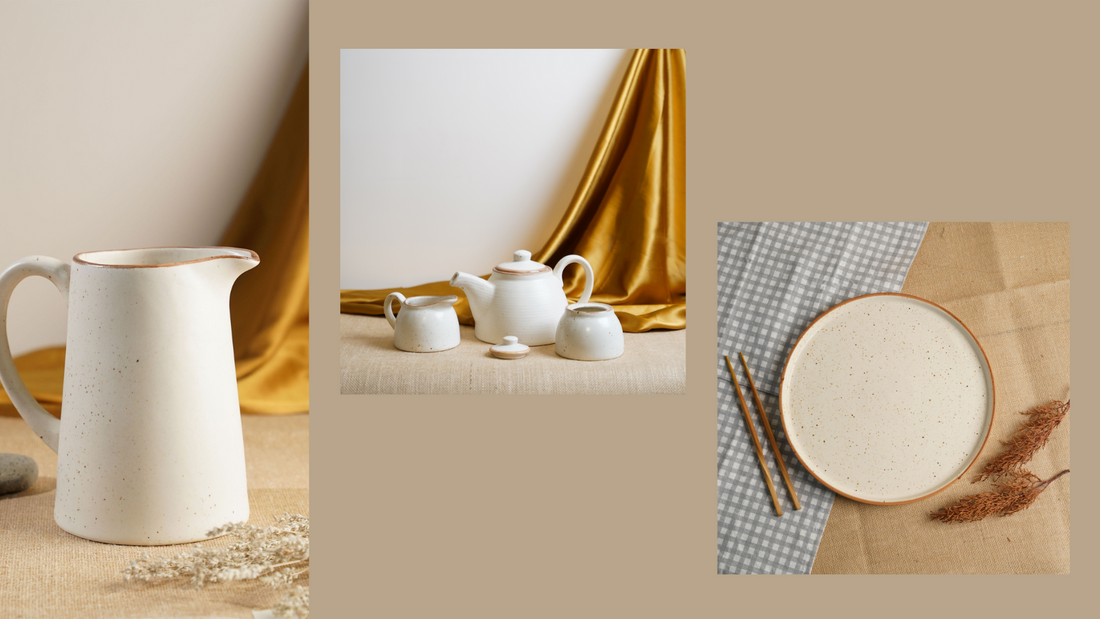The design, shape, material, and color of dinnerware have been known to play a major role in whetting the appetite for various kinds of food. For instance, eating a salad in a bowl rather than out of the box is a lot more appealing. Choosing white serveware makes the colors of the food served to stand out, thereby adding to its attractiveness.
A wide variety of raw materials are used to make serveware: metals such as copper, aluminum, silver, steel, plastic, glass, ceramic, and wood. The choice of the material is something to be considered as dishes meant for home usage should be smaller in size, easy to clean and maintain. The tableware is an important component of the dining table. Talking about this brings me to the idea of tableware made of ceramic. Some common examples of ceramics are pottery, terracotta, fine china, bone china, porcelain, glazed earthenware, paper clay and stoneware.
People have been using ceramic tableware since time immemorial because ceramic is considered as the healthiest material of all the materials. It is non-porous and ceramic products are safe to use. There are many advantages to them such as Safe for health, Heat friendly, Durability, Non-sticky, Versatile. They are known not to contain vinyl and chemicals, and not to absorb chemicals like plastic, while having stable thermodynamics, and chemical stability.
Let’s talk about the difference between Ceramic, Stoneware, Studio Pottery & Porcelain, Bone china or & Blue pottery.
Ceramics
The word ceramic in Greek which translates as "of pottery" or "for pottery". Both pottery and ceramic are general terms meaning they have been formed with clay, hardened by firing and decorated or glazed. Stoneware & Porcelain, Bone china are the type of Ceramics.
Stoneware
Stoneware is made from particular clay which is fired at a higher temperature of 1,200°C. This results in a more durable material, with a denser, stone-like quality. This is manufactured in India at a very large scale in towns of Uttar Pradesh.
Most commonly used for all the decorative Serveware & is exported to a lot of other countries.
Studio Pottery
Is studio pottery the same as Stoneware ?
Studio pottery is a type of stoneware but uses more refined clay & is glazed 3 times as compared to the regular stoneware which is only fired once . Thus Studio pottery Serveware /Dinnerware is more decorative & is used for all the luxuries.
Porcelain
Porcelain comes from a refined clay which is fired at very high temperatures of approximately 1,200–1,450°C. The result is an extremely hard, shiny material often white and translucent in appearance.
In India we mostly only manufacture Porcelain floor or wall tiles not the Serveware/dinnerware .
Bone china
The earliest forms of porcelain originated in China around 1600BC and this association is popularized by the term 'fine china’. The term Bone china is used when the porcelain has had ground animal bone added to the clay, in order to create an even more durable material.
This is not commonly used due to the usage of bone in the process & is banned by a lot of countries.
Blue Pottery
Blue Pottery is widely recognized as a traditional craft of Jaipur, though it is Turko-Persian in origin. The name 'blue pottery' comes from the eye-catching blue dye used to color the pottery.
Blue Pottery is made from quartz and not clay.
Being fired at a very low temperature makes them fragile. The color palette is restricted to blue derived from the cobalt oxide, green from the copper oxide and white, though other non-conventional colors, such as yellow and brown are sometimes included.
Preferably this is used for Tableware decorative purposes such as Ginger Jars ,dry storages Artificial flower vases.





